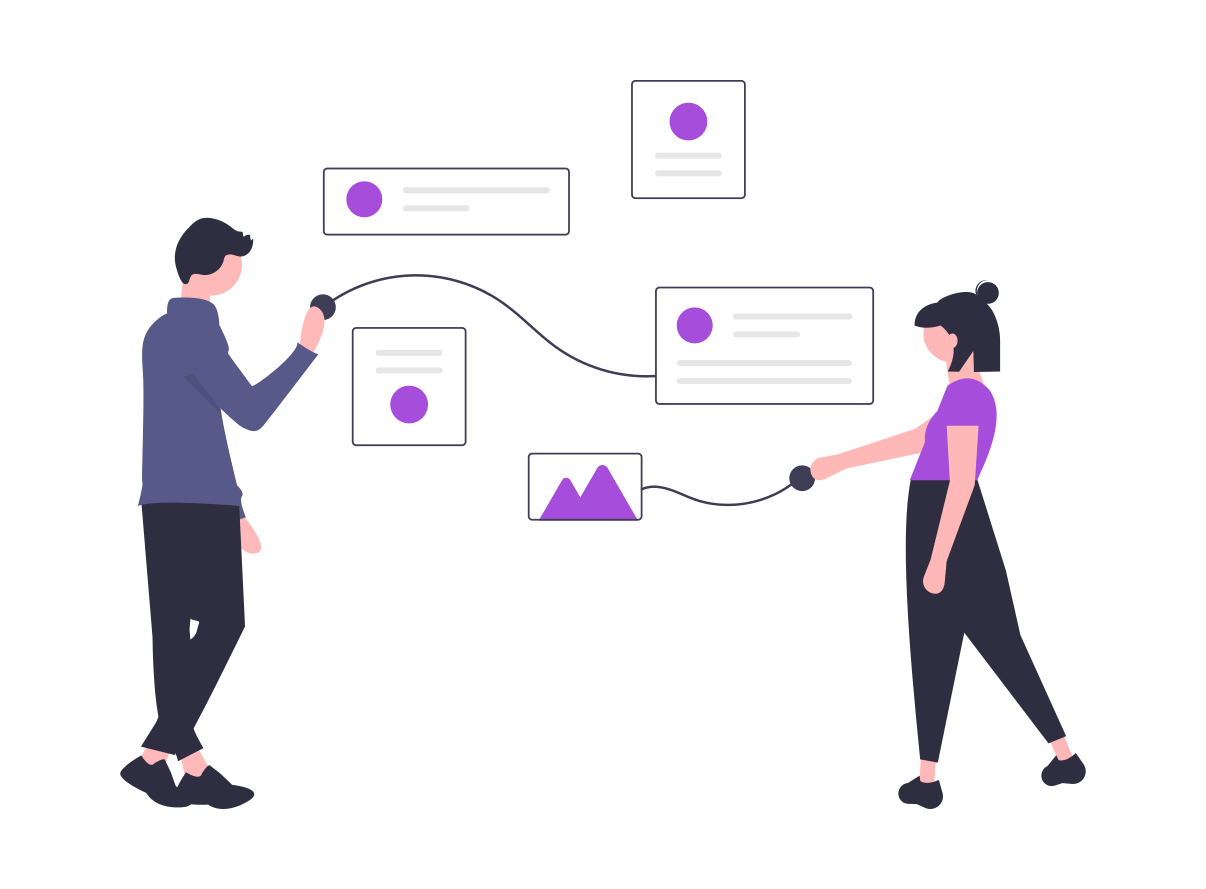Great things in business are never done by one person; they’re done by a team of people.
These line by Steve Jobs rings especially true for distributed engineering teams. Have you ever wondered how teams scattered across the map manage to create groundbreaking products together?
As technology connects us globally, leading distributed engineering teams has become both a challenge and a necessity. Did you know that the first video call was made in 1964? Back then, it seemed like science fiction, but today, it’s a crucial tool for remote teams.
This blog has compiled eight valuable practices that can transform your team’s dynamics. Join us on this insightful journey as we learn the art of leading distributed engineering teams to success. Let’s make remote teamwork not just a necessity but a real success story. Scroll down!
Best Practices For Leading Distributed Engineering Teams
In this section, we’ll learn eight practical tips for successfully leading distributed engineering teams. From effective onboarding to utilizing the right collaboration tools, these best practices will help you to win the complex task of managing remote engineering teams. Read on!
1. Onboarding New Team Members
Employee onboarding is a crucial step in integrating new team members into an engineering team. It goes beyond the paperwork and includes the entire process of adjusting employees to the company’s culture, values, and their role within the organization.
During onboarding, familiarize new hires with the company’s mission, vision, and day-to-day operations. They are introduced to team members and key stakeholders, establishing connections that facilitate collaboration.
Effective onboarding ensures that employees understand their responsibilities and feel comfortable in their work environment.

Aberdeen Group, in its research, found that engaging onboarding programs retain 91% of their employees for at least one year. Impressive, right? To make your onboarding process engaging, include a thorough introduction to the company’s tools and communication platforms and ensure access to necessary resources and training material for easy integration.
Several renowned organizations excel in their onboarding processes. Like, Google is known for its exceptional onboarding, focusing on five key elements.
These elements include clearly defined responsibilities, regular check-ins, an open door policy, promoting social connections, and matching new employees with peers.
Besides Google, Facebook also follows an efficient onboarding process that incorporates a “boot camp” where new engineers learn about the company’s technologies and culture.
Read More: Remote Employee Onboarding Checklist and Best Practices!
2. Establishing Team Structure
Team structure means how a team is organized. It’s like a plan that shows who does what, who reports to whom, and how tasks are shared. This plan creates a clear path for your team members to work together.
Having a clear team structure is super important in distributed engineering, where teams are spread out in different places. It’s like the strong backbone that holds the team together, helping everyone work well and talk effectively even if they are far apart.
This structure defines how your team operates, who handles specific roles, and how decisions are made. Let’s explore three types of team structures that organizations can follow:
- Horizontal Structure: Teams are organized based on skills or functions in a horizontal structure. Developers team up with their peers from other locations, forming a cohesive unit focused on specific expertise. This setup encourages skill-sharing, innovation, and a common language among team members, building a dynamic environment where knowledge flows effortlessly across geographical boundaries.
- Vertical Structure: Vertical team structures resemble a traditional hierarchy like a family tree. Here, authority flows from top to bottom, similar to a waterfall flowing through various levels. Project managers and leaders hold the top position, guiding the team towards goals. This structure enhances accountability, as each team member has a designated leader to report to.
- Matrix Structure: In this structure, individuals report both to their functional manager and project manager, creating a dynamic web of connections. This fosters flexibility and adaptability as team members collaborate on various projects simultaneously. It’s a well-rounded approach to problem-solving and project execution.
3. Prioritize Communication
Prioritizing communication is not just a box to tick—it’s a fundamental practice that promotes collaboration, ensures clarity, and boosts productivity.
As 20% of remote employees consider communication as the biggest challenge, there is a need to focus on consistent communication.
Clear communication reduces misunderstandings, aligns goals, and promotes a sense of unity within the team.
 Implementing this practice involves establishing strong communication channels. Utilize video calls, messaging apps, and regular team meetings to create a cohesive virtual workspace.
Implementing this practice involves establishing strong communication channels. Utilize video calls, messaging apps, and regular team meetings to create a cohesive virtual workspace.
Encourage transparency by sharing project updates, challenges, and achievements openly, promoting a culture of openness and trust.
Now, here’s a crucial aspect to keep in mind—time zone differences. When implementing this practice, schedule meetings at times convenient for all team members, considering their locations globally.
Encourage regular participation by creating an inclusive environment where team members feel comfortable expressing their thoughts. Here are some additional tips for prioritizing communication:
- Establish Clear Communication Protocols: Define guidelines for communication methods, response times, and the use of specific channels for different types of information. Consistency in communication protocols reduces confusion and enhances overall team efficiency.
- Encourage Regular Check-ins: Establish a routine of regular check-ins, whether through daily stand-up meetings or weekly updates. These sessions provide opportunities for team members to share progress, discuss challenges, and offer support.
Read More: How Team Communication Tools Can Empower Teams & Amp Up Productivity?
4. Strong Company Culture
A company culture goes beyond shared values; it’s about creating a work environment that uplifts individuals. A strong company culture promotes a sense of belonging, making team members feel connected despite physical distances.
When everyone is aligned with common values and goals, it cultivates a supportive atmosphere that fuels creativity and problem-solving.
Implementing a strong company culture starts with defining core values that resonate with the team. Communicate these values clearly and consistently through various channels, especially through regular team meetings.
Alignment with common values and goals creates a supportive atmosphere, boosting creativity and effective problem-solving.
This practice initiates a positive environment. Team members become more engaged, motivated, and resilient in the face of challenges. To build a strong company culture:
- Ensure that the culture is inclusive and encourages diversity. Recognize and appreciate different perspectives, creating an environment where everyone feels heard and valued.
- Regularly communicate the company’s vision, mission, and values. Use diverse channels like team meetings, newsletters, or even casual virtual gatherings to reinforce these messages.
- Demonstrate the desired cultural behaviors through your actions and decisions, highlighting the importance of the established values.
- Establish a culture where all members feel comfortable expressing their ideas and concerns. This promotes a collaborative atmosphere where innovation can flourish.
- Acknowledge both team and individual achievements to create a positive environment and make everyone feel valued.
- Support continuous learning and growth. Providing opportunities for developing skills and career advancement demonstrates a commitment to the team’s long-term success.
Related: Build a Strong Organizational Culture With Effective Strategies & Best Practices!
5. Encouraging Knowledge Sharing
Implementing effective knowledge-sharing practices brings about a positive shift, ensuring that valuable insights and expertise are accessible to all members of an engineering team, irrespective of their geographical location. To put this practice into action, consider the following strategies.

- Knowledge-Sharing Tools: Invest in the right tools that facilitate smooth communication and information exchange. This tool ensures that team members can access and contribute to shared documents without any complications, promoting a flow of information. Consider platforms like Bit.ai, which offers a user-friendly environment for creating, sharing, and collaborating on documents, making knowledge-sharing efficient.
- Virtual Events: Hosting virtual events is another impactful way to gain knowledge sharing and break communication barriers. These events can range from webinars and workshops to informal virtual coffee chats. Such gatherings provide opportunities for team members to share insights, discuss hurdles, and learn from each other’s experiences.
- Dedicated Spaces: Creating dedicated spaces could be in the form of shared online repositories, discussion forums, or collaborative platforms. Having designated spaces encourages team members to actively contribute their expertise, ask questions, and seek guidance. This sense of an inclusive knowledge-sharing environment makes every team member feel valued and empowered.
Remember, creating a knowledge-sharing culture is not just a task; it’s a mindset that, when executed effectively, leads distributed engineering teams toward greater efficiency and success.
Periodically evaluate the effectiveness of knowledge-sharing initiatives, encourage feedback from all members, and make necessary adjustments to enhance the overall process.
6. Monitor The Process
Keeping a close eye on the ongoing tasks, progress, and overall workflow is crucial when leading distributed engineering teams. The why behind this? It ensures that everyone on your team is heading in the right direction and hitting their milestones.
When it comes to taking action to monitor the process, it’s about creating a system that tracks individual and team achievements. Flexibility is key; distributed teams require adaptable approaches, unlike a traditional office setting.
Being open to adjustments is important for accommodating different time zones, work styles, and unforeseen challenges. This practice brings about significant changes in distributed engineering teams, like:
- It builds a culture of accountability. When everyone knows their progress is being monitored, there’s a natural inclination towards meeting deadlines and delivering quality work.
- It promotes effective communication. Regular check-ins and updates become integral, preventing isolation and ensuring everyone is on the same page.
While implementing this process, consider the human aspect. Remember, developers in your team are individuals with varying needs and working styles. Offer flexibility where possible, allowing them to balance work and personal commitments effectively.
Ways to monitor the process range from daily meetings to weekly progress reports. These tools provide insights into the team’s rhythm, allowing for prompt adjustments if needed. The objective is not to micromanage but to ensure a productive workflow.
7. Using The Right Collaboration Tool
When team members lack access to the appropriate collaboration tools, the consequences can be challenging to both efficiency and morale.
Imagine team members scattered across different time zones, struggling to communicate effectively. Emails get lost in translation, important updates fall through the cracks, and the overall workflow resembles a disjointed puzzle, missing key pieces. The result? Frustration, delays, and a sense of disconnect among team members. Without the right collaboration tools, the very essence of teamwork is compromised.

Bit.ai comes to the rescue as the perfect collaboration tool for distributed engineering teams. With Bit, everything you need to collaborate effortlessly is integrated into one space. It offers creating, editing, and collaborating on documents in real time. Each member of an engineering team can easily contribute their expertise to the project’s success.
Rich Media Integrations
Bit takes collaboration to the next level with its rich media integrations. Gone are the days of boring files; Bit allows you to embed videos, charts, audio, forms, charts, hyperlinks, code blocks, and other interactive elements directly into your documents. This diverse approach not only enhances engagement but also ensures that information is conveyed in the most effective way possible.
Version History
For distributed engineering teams, version history is a common pain point. With Bit, this challenge becomes a thing of the past. The platform automatically tracks changes, allowing team members to revert to previous versions effortlessly. This not only ensures the integrity of your work but also provides a safety net for experimentation and innovation.
Easy Communication
The platform’s comment and mention features facilitate easy communication within documents. Need clarification on a specific point? Simply leave an inline comment, and your team members can respond in real-time. This reduces the delays associated with traditional communication methods and keeps the workflow smooth and efficient.
Smart Workspaces
Organize your projects into smart workspaces, keeping everything related to a specific task or topic in one place. This is a great way to simplify project management by having a dedicated space for each aspect of your work.
Security and Permissions
Ensure data security with role-based permissions, controlling who can view, edit, or comment on specific documents. While sharing the document, add a password to maintain confidentiality and control access to private information.
Think of collaboratively creating a presentation or document, with team members adding their insights and expertise. Bit makes this a reality, ensuring that your work is not just informative but also reflects the collective intelligence of your distributed engineering team.
8. Pursuing Common Goals
When team members rally behind common objectives, it’s like tuning instruments in a band – each player contributes to a harmonious melody. In the context of distributed engineering, this harmony translates to a shared sense of purpose that propels the team forward.
When engineering teams synchronize their efforts, they deal with challenges more effectively, leading to quicker project delivery and higher-quality outcomes.
Working on common goals involves a strategic approach. Here are three tips to guide teams in integrating this practice into their daily operations:
- Define Clear Objectives: Start by setting clear and specific objectives for the team. Incomplete information can lead to confusion, so articulate goals in a way that leaves no room for interpretation. For example, instead of saying “Improve System Performance,” specify “Reduce Page Load Time by 20%.”
- Promote Cross-functional Collaboration: Break down silos by encouraging collaboration across different functions. When software developers, testers, and designers collaborate, it mirrors the synergy of a well-coordinated sports team, where each player contributes their unique skills for collective success.
- Celebrate Collective Achievements: Acknowledge and celebrate milestones as a team. Recognizing collective achievements reinforces the idea that every contribution matters. It’s similar to celebrating a successful summit as a mountaineering team – everyone’s effort contributes to reaching the peak.
In short, the success of leading a distributed engineering team lies in a strategic blend of communication, culture, and technology. Each practice shared here contributes to a coordinated and productive team. Keep these practices at the forefront, and watch your distributed engineering team flourish.
Now, prepare yourself for the final section, where we tie it all together. Let’s turn theory into action and pave the way for a future where distance is no barrier to engineering excellence.
Final Section
As we complete our exploration of the essential best practices for leading distributed engineering teams, you’ve gained valuable insights into promoting collaboration and enhancing productivity.
Your team’s success lies in your hands now! Utilize the guide we’ve provided and watch your distributed engineering team leading toward success.
Remember, Bit.ai stands ready to assist you in implementing these practices. Head over to Bit, sign up, and experience the power of collaboration. Add some fun to your team—it makes a difference! Happy teaming!
Further Reads:

Related posts
Bit.ai | Watch to Learn More
What is Bit.ai?
Bit.ai is an innovative AI-driven knowledge and Document Managment suite designed to empower knowledge workers by streamlining the creation of, documents, wikis, and notes. With an intuitive interface and seamless integration, Bit.ai acts as a versatile assistant to help you collaborate, generate, organize, and visualize your ideas effortlessly. Whether you are drafting a report, managing a project, collaborating with your team or clients, or brainstorming new concepts, Bit.ai brings intelligence and creativity to every aspect of your work process.


